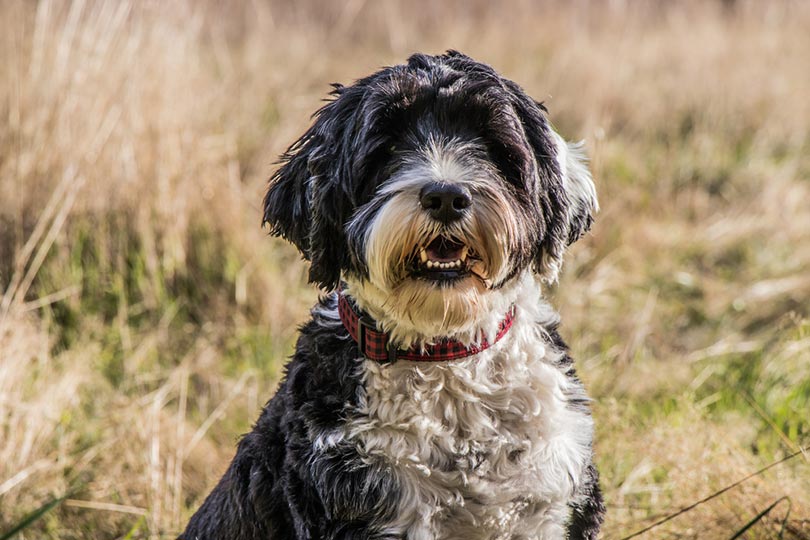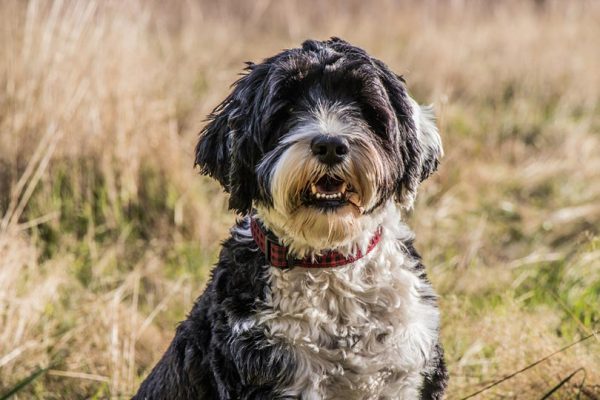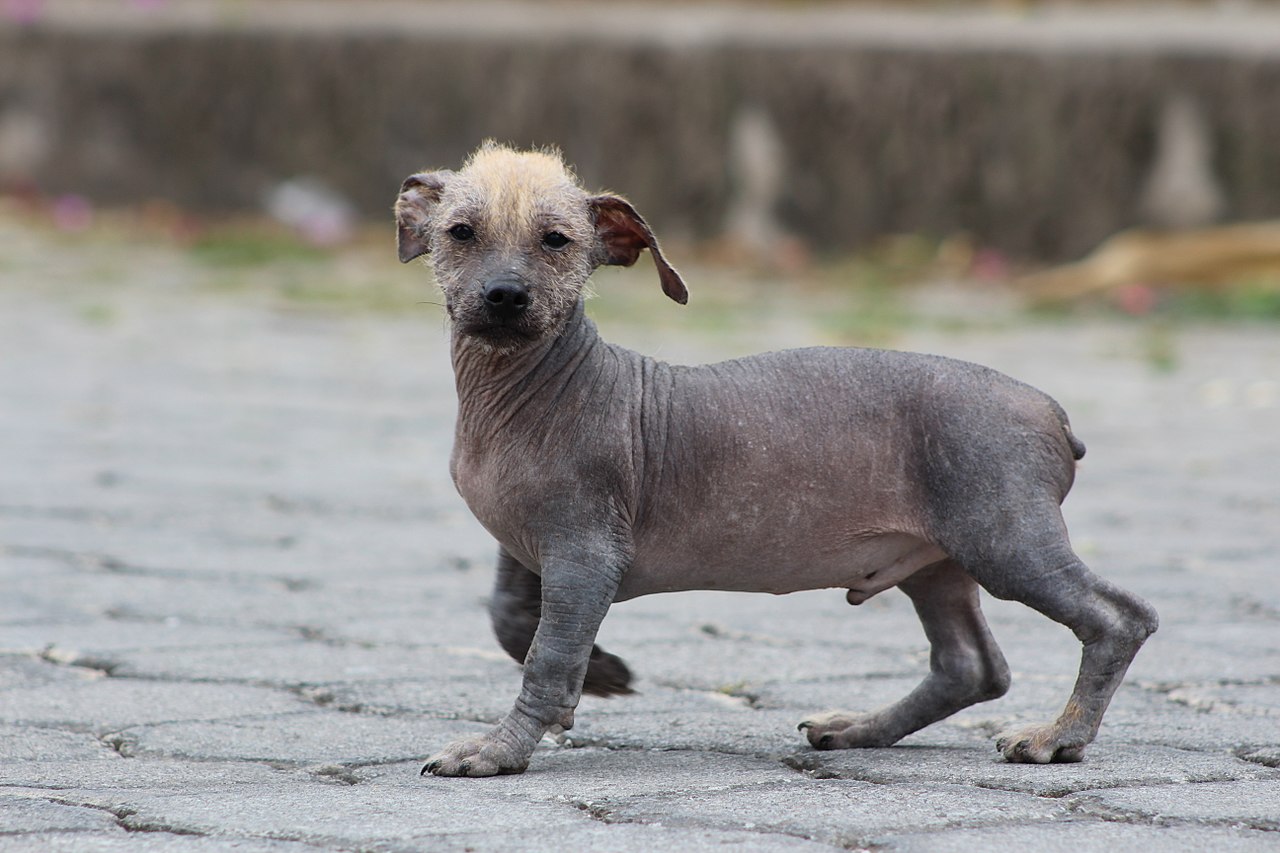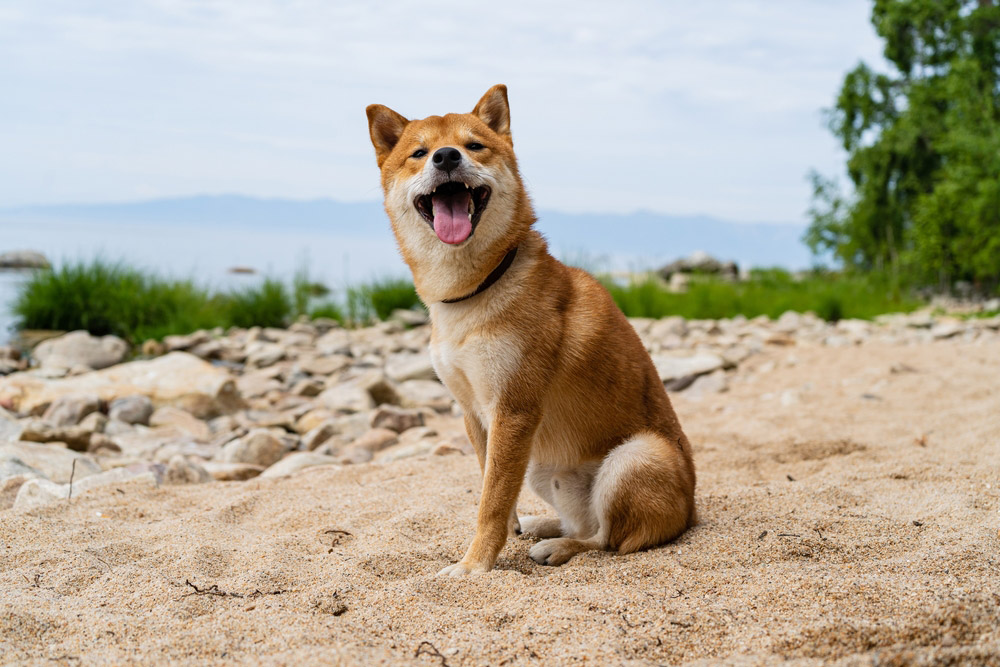When you think of black and white dogs, a few breeds might come to mind first, but what other dogs classically show up in this monochromatic pattern? In this article, we will discuss breeds that are often black and white, along with basic information in case you’re looking for a new pal.
If you’re looking for a beautiful black and white canine, you might just find your new best friend below.
The 10 Black & White Dog Breeds
1. Border Collie
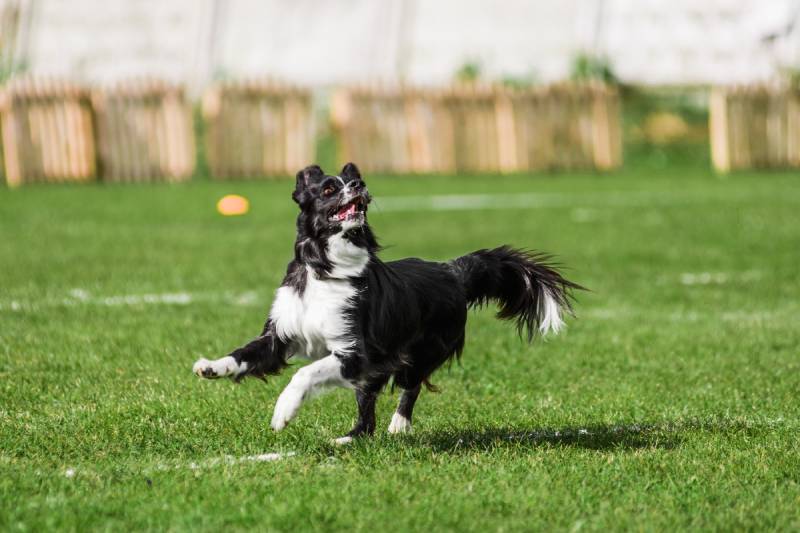
The Border Collie is an exceptionally smart canine, and they score higher than other breeds on intelligence tests. This pup is traditionally black and white, though they can come in other colors like lilac and white and liver and white.
Personality
Border Collies are incredibly loyal dogs that form strong bonds with their owners. They can understand broad concepts and are very emotionally intuitive creatures. Although the Border Collie would work for growing families, they are herding dogs.
They might try to nip at the heels of small children. They’re not aggressive, but their behavior can scare young kids Also, Border Collies require lots of space to stretch their legs.
They do best in homes or farms with a large, securely fenced-in yard. They are certainly not apartment dogs and are likely much too energetic for less active individuals.
Exercise Needs
They need up to 2 hours of daily exercise, and you will need to fulfill their mental needs. Border Collies love having a job and enjoy exercising their brain as much as their bodies.
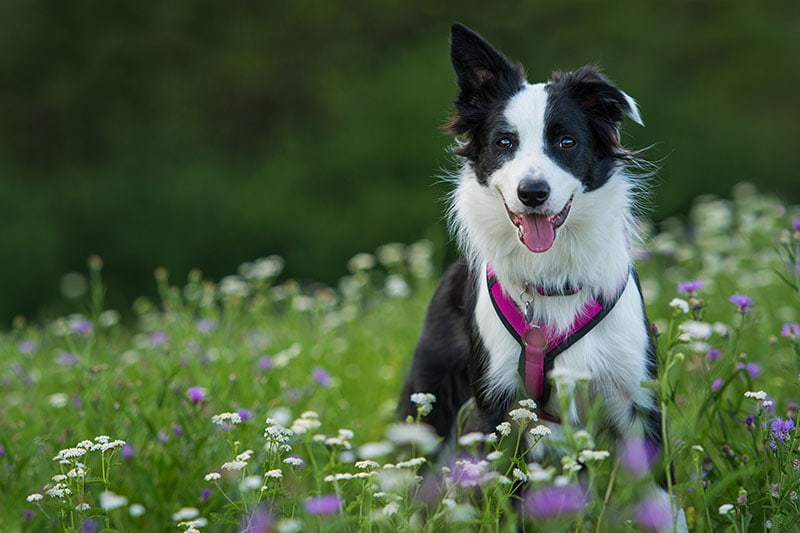
Training Capabilities
Border Collies are highly skilled when competing in agility courses and other canine sports. They tend to be very receptive and eager to please, making them exceptional candidates for professional and at-home training techniques.
Health
Border Collies are generally a very healthy breed and live 12 to 15 years. However, some health conditions show up more frequently in Border Collies.
These conditions include hip dysplasia, tooth pathology, obesity, and epilepsy.
2. Dalmatian
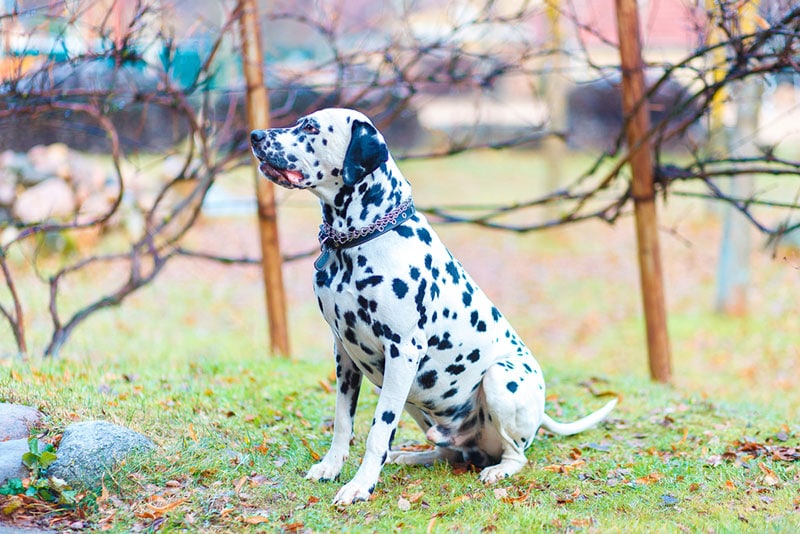
Dalmatians have been instantly recognizable for years due to their unique spotted pattern. Less commonly, you might see a liver-spotted or lilac-spotted Dalmatian, but the most common colors are black and white.
Personality
Dalmatians are lively, adventurous dogs that prefer a lot of daily activity. If you want a jogging buddy or a dog you can take on adventures, the Dalmatian is ideal. While they can get along with other pets if they are properly socialized, Dalmatians might be a little more inclined to have an aversion to smaller pets, as they have a high prey drive.
Most are compatible with other canines, but some territorial tendencies have been noted. Because some Dalmatians might have special needs, they do best with experienced owners. They’re not suitable for homes with very young children, older adults, or folks with disabilities, as they require quite a bit of work. Also, there are better candidates for apartment or city living than these dogs.
However, if you can give them an extensive amount of exercise, you can make it work.
Exercise Needs
Dalmatians prefer a life of high-intensity exercise. They require roughly 1 1/2 to 2 hours of daily exercise to stay happy, healthy, and fulfilled. They enjoy many fun activities like walks, jogs, fetch, and advanced exercises like agility training.
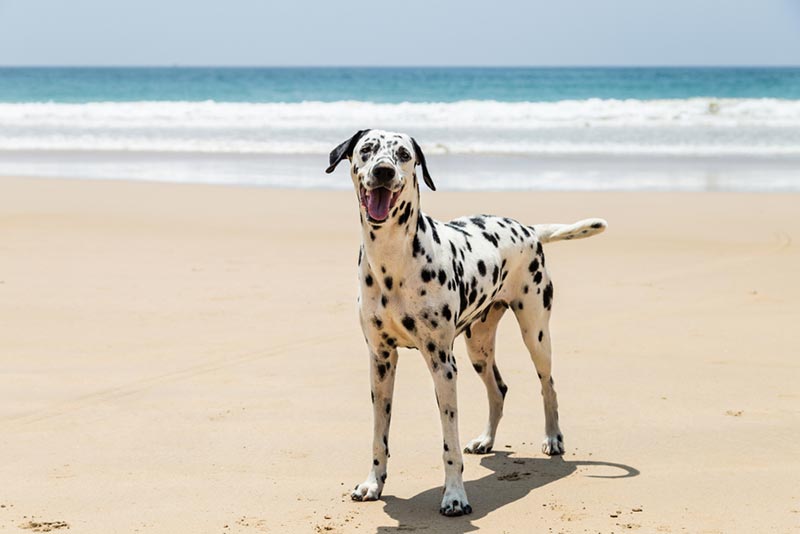
Training Capabilities
Dalmatians can learn commands and tricks, but it can come with challenges. First, They can be stubborn and challenging for novice or inexperienced owners. Also, since many Dalmatians are deaf, it might significantly impact the way you’re able to train them. If you’re up for the challenge, seeking a professional trainer can be a really great way to give them the skill set that they require in life. It can also help you learn how to handle them!
Health
Dalmatians can suffer from several health ailments. First and foremost, many Dalmatians are either unilaterally or bilaterally deaf. Whether you select a reputable breeder or not, this issue crops up in the breed regardless of genetic testing. Otherwise, Dalmatians can deal with health issues affecting many other breeds. Some of these issues include epilepsy, urinary conditions, and hip dysplasia.
- More About Dalmatians: Male vs Female Dalmatians: What Are the Differences? (with Pictures)
3. Boston Terrier
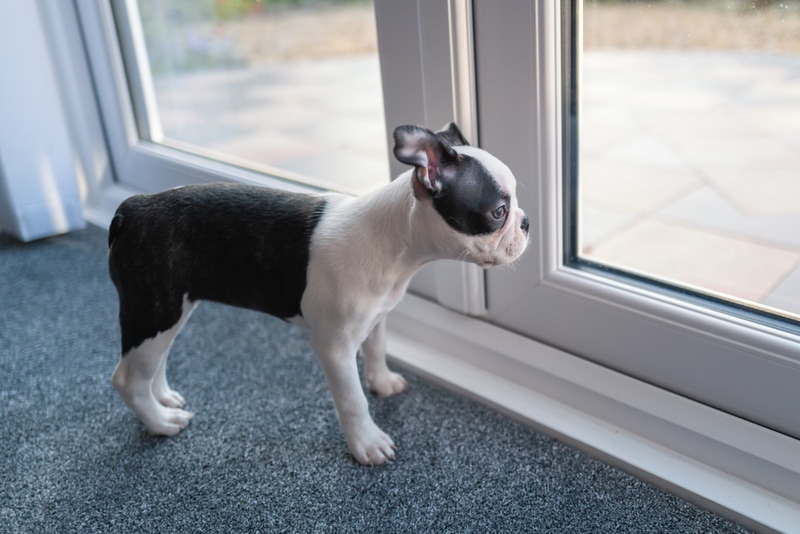
Boston Terriers are adorable little dogs with big personalities. Classically, you see Boston Terriers in black and white, but they can also be brindle and white and seal in white.
Personality
Boston Terriers are cheerful, happy little pups that love attention from their owners! They make fabulous shadow companions, accompanying families wherever they go. Because they are so attached, they might not be the best pups for owners who don’t spend much time at home.
Boston Terriers get along well with small children thanks to their demeanor and small size, and they can adapt to living in an apartment.
Exercise Needs
Boston Terriers need moderate exercise, and they’ll be happy with two brisk walks a day to stretch their little legs.
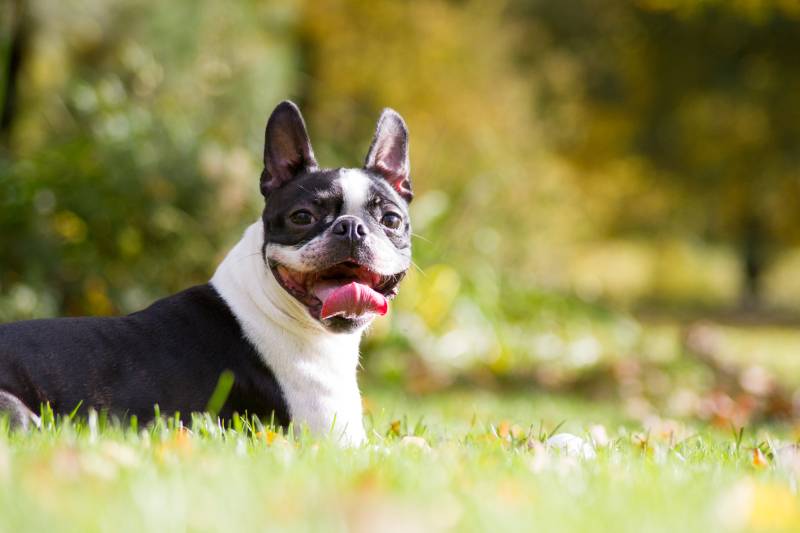
Training Capabilities
Boston Terriers are known for being a little tricky to train. They can have difficulty with potty training, so consistency is critical to a successful relationship. They are pretty obedient, but electing them for advanced training might take some convincing.
Health
Boston Terriers are brachycephalic dogs with short muzzles and bulging eyes. They can suffer from brachycephalic airway syndrome, making it challenging for them to breathe. They can also suffer from glaucoma, luxating patella, and epilepsy.
4. Husky
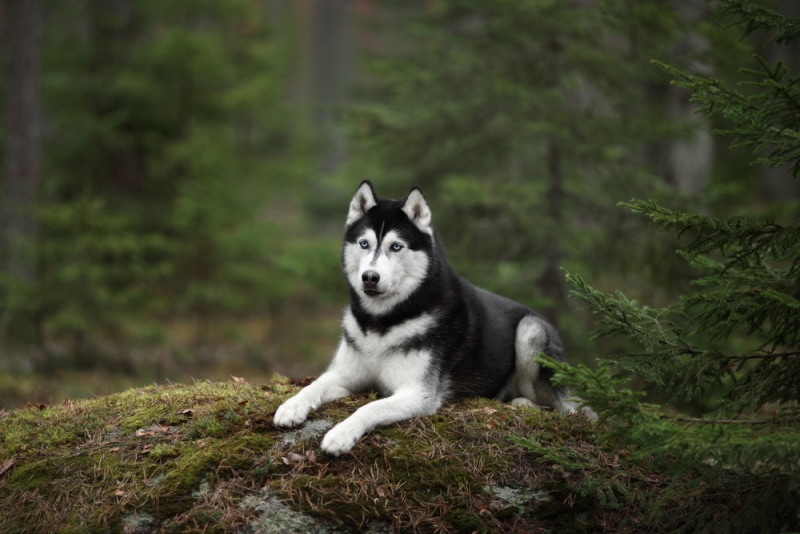
Huskies can come in a broad spectrum of colors, which is one of the allures of the breed. Black and white is a common Husky color combination, and many sport lovely, penetrating blue eyes.
Personality
Huskies have prominent personalities but also a sense of humor. They can be goofy, but they’re also stubborn and talented at escaping. Their love for adventure can sometimes get them into trouble. They do best in large yards with regular exercise or homes with lots of land. These loyal companions can work well in various lifestyles, whether you have a growing family or are single.
However, due to their advanced exercise requirements, they work best with active owners.
Exercise Needs
Huskies require around 1½ hours of daily exercise. Having a secure space for them is even more important, as they are notorious for running off and having their own adventures. The Husky will happily accompany you on any adventure you’d like to go on. However, they are known for their predatory response, so they might chase smaller pets, like cats, chickens, and other prey animals.
Because of their prey drive and wanderlust potential, they require a very secure, tall, fenced-in yard where they cannot escape.
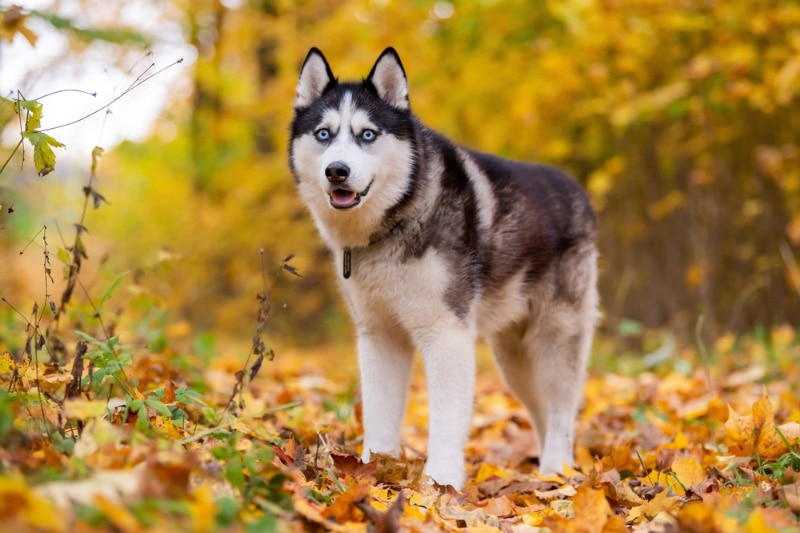
Training Capabilities
Huskies are highly trainable, which is one of the reasons they’re so sought after. However, they can be a big challenge for people unfamiliar with the breed, as they can be stubborn and have a mind of their own.
It is vital to develop a hierarchy with them so they know who the boss is and learn to take training seriously. Many owners get professional help to train their Huskies.
Health
Huskies were bred to be incredibly hardy dogs. They have very few health issues, but much of that depends on genetics and breeding. Some Huskies can be susceptible to hypothyroidism, hip dysplasia, and eye problems.
5. Landseer Dog
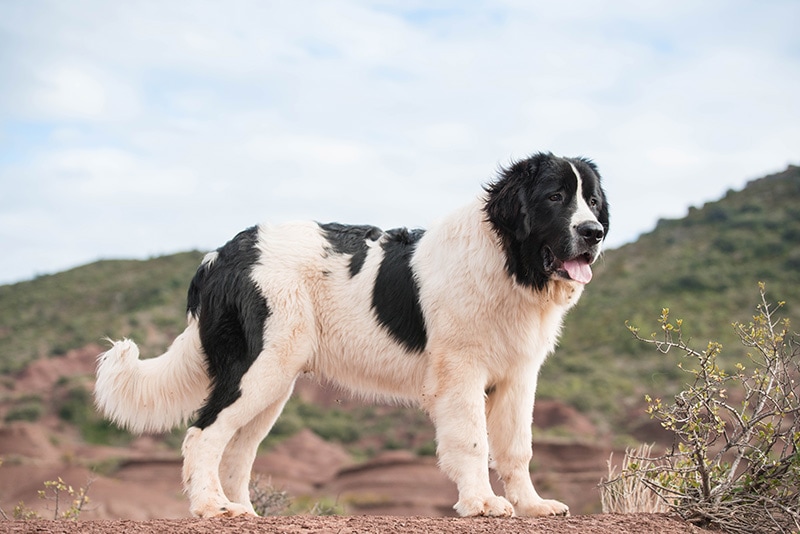
When you look at the Landseer dog, they might look familiar. The Landseer is almost identical to their much more familiar counterpart, the Newfoundland. However, the Landseer is classically black and white and is an independent breed from Canada.
Personality
Like their Newfoundland cousins, Landseers are incredibly patient, affectionate, and loyal. They will fill your home with lots of love and slobbery kisses! If you don’t like an abundance of loose hair and saliva in your home, this might not be the dog for you. However, they make amazing companions for so many different lifestyles.
The Landseer is typically patient and ideal for growing families. Even though their size might make them somewhat incompatible with smaller children, they tend to be very aware of their surroundings and are usually careful around children.
Because of their size and inclination for the outdoors, they might not make the best companions for apartments or city living. However, a Landseer will love to roam around the perimeter if you have a suburban home with a large yard or several acres in the country.
Exercise Needs
While the Landseer is large, they don’t require an extensive amount of exercise to stay happy and healthy. On average, they require 45 to 60 minutes of solid exercise per day.
After running around and playing. they like to cuddle up with you on the couch.
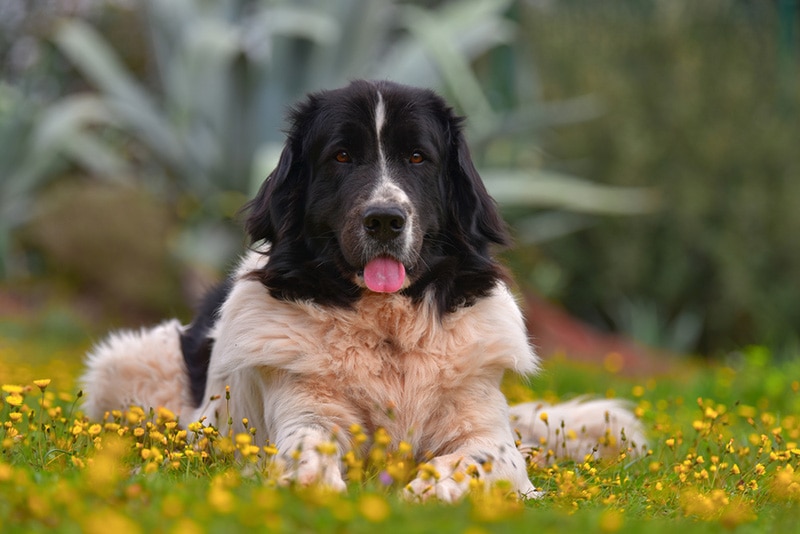
Training Capabilities
Landseers are receptive to training. Although they might be slightly challenging for a novice owner, they generally respond very well to commands and respect their owners. Most would consider them moderately challenging in terms of training.
Health
Landseers are healthy pups, but they are prone to hip dysplasia and other joint disorders. Their giant size can significantly impact the overall structure of their bodies, making them wear down faster.
Because of this, they have a shorter lifespan than many other breeds, living roughly 7 to 10 years.
6. Alaskan Klee Kai

The Alaskan Klee Kai is a peppy dog similar to other more common breeds, such as the Husky or Malamute. They’re a Spitz-type breed that comes in toy, miniature, and standard sizes.
Personality
The Alaskan Klee Kai is very loyal and devoted to their families. However, they are suspicious of strangers and require constant stimulation and socialization. Even though they don’t mesh well with outsiders, they’re excellent guard dogs.
The Alaskan Klee Kai, no matter their size, requires an experienced owner. They can make excellent pets for the right families, but they do not do well in cities, small apartments, or with small children.
Exercise Needs
The Alaskan Klee Kai is a very energetic breed that requires frequent physical outlets. If you can’t exercise them dog daily, they’re not the breed for you. They require a secure fenced-in area to run around since they are prone to wandering. They also requires up to 2 hours of exercise every day.
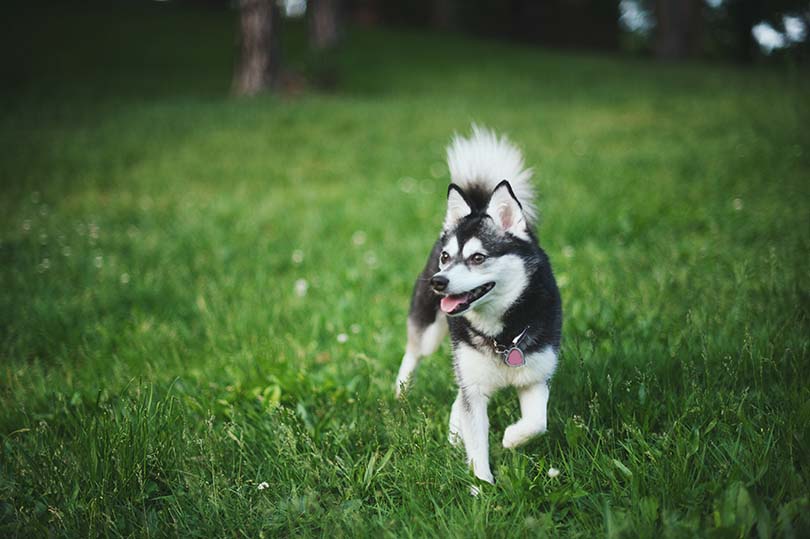
Training Capabilities
The Alaskan Klee Kai is eager to learn and highly trainable. They are very receptive to commands because they are so devoted to their humans. However, those with less experience training energetic canines may need a professional’s help.
Health
The Alaskan Klee Kai is said to be a very healthy breed. However, they can be prone to luxating patella, thyroid conditions, liver shunts, and cataracts. Interestingly, the Alaskan Klee Kai keeps their baby teeth, which may require surgery later.
7. Smooth Fox Terrier
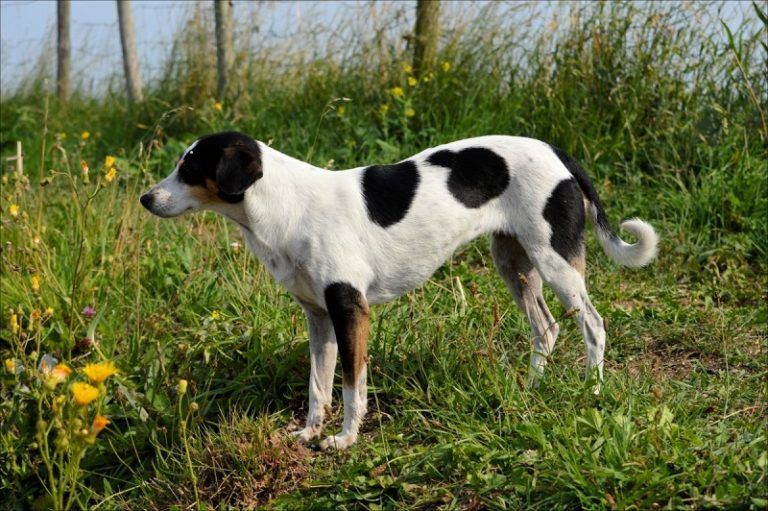
The Smooth Fox Terrier was the first Terrier breed to be recognized by the American Kennel Club. They’re agile, muscular little dogs with big personalities. You will often see them in black and white, though they can also be tricolor and brown and white.
Personality
The Smooth Fox Terrier has a classic Terrier personality. They love to play games, and they’re incredibly intelligent. However, adding a Smooth Fox Terrier might not be the best decision if you have other dogs that don’t tolerate bossiness very well. The Smooth Fox Terrier prefers to be the “top dog.”
Because of their headstrong nature, they are not suitable to interact with smaller children. They get along better with kids who are roughly 6 and older. If you exercise them properly, they can live in apartments. They can get along very well with other canines, even though they might have a little power struggle.
Exercise Needs
They enjoy the great outdoors and utilize their sniffing and tracking skills on daily walks. Since they are adventurers at heart, it’s best that you have a contained space for them. If left unattended, the Smooth Fox Terrier can get into trouble due to their wanderlust.
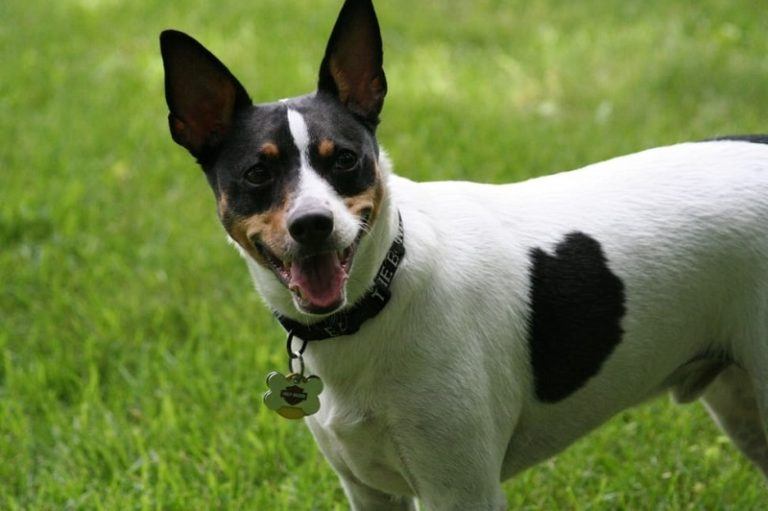
Training Capabilities
The Smooth Fox Terrier is a highly trainable little dog receptive to positive reinforcement. Once you establish that you are the leader, they will follow suit and listen to your commands cheerfully. They are food-motivated, so they are easy to manipulate, making your job a little easier. The Smooth Fox Terrier has a high prey drive and shouldn’t live with smaller pets, even with extensive training.
Health
The Smooth Fox Terrier is a very healthy little dog that can live up to 15 years. They have a few health issues to mention, most of which are minor. They include progressive retinal atrophy, atopic dermatitis, abnormal detention, and myasthenia gravis.
- Related Read: 10 Oldest Dog Breeds (With Pictures)
8. Schnauzer

Schnauzers come in many coat colors, but one of the primary choices is black and white. They are also available in miniature, standard, and giant sizes. They have high grooming needs but are otherwise low-maintenance dogs.
Personality
Schnauzers are dignified, spirited dogs that have a bountiful amount of energy. Personalities certainly differ depending on the size of the Schnauzer you get. Here is a little about each.
Miniature Schnauzers are known to constantly bark to alert their owners to any changes around the home. These adventurous little pups are brilliant and obedient, making them great candidates for training.
Standard Schnauzers are typically very laid-back and easygoing. They tend to be very patient and gentle, so they can be compatible with kids of all ages. The Giant Schnauzer is more of a workaholic than their smaller cousins. They are happiest when they have a job to do and take guard duties very seriously.
Exercise Needs
Schnauzers require a moderate amount of exercise. They enjoy daily walks, playing backyard games, and running around with other canine companions. Miniature and Standard Schnauzers can adapt to living in apartments if they get enough exercise.
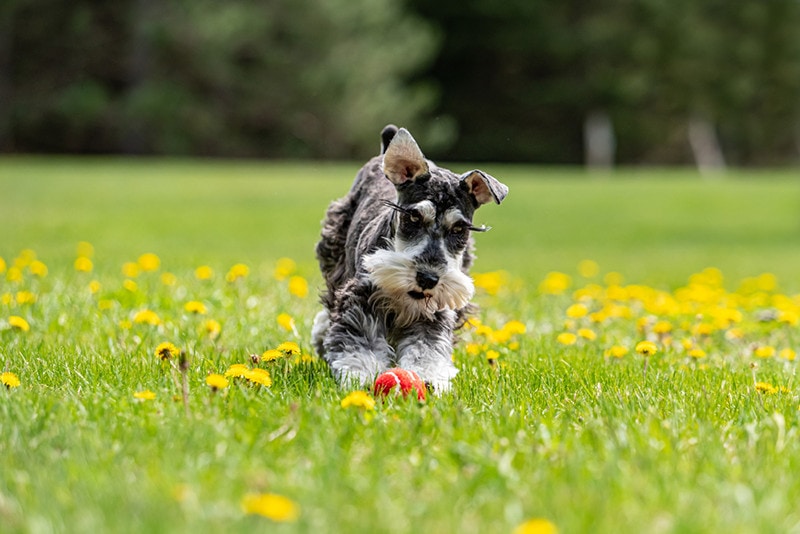
Training Capabilities
Schnauzers aren’t too difficult to train, but they can be stubborn at times. Because they are so willing to please their owners, they are usually motivated by positive reinforcement and treats!
Health
Schnauzers can suffer from several health ailments, including allergies, diabetes, pancreatitis, and epilepsy.
9. Portuguese Water Dog
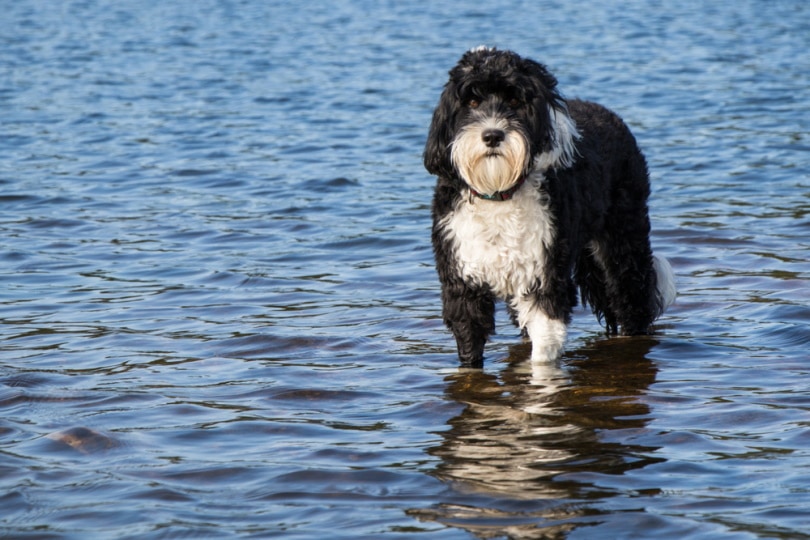
The Portuguese Water Dog is a traditional black-and-white breed from Portugal. As the name implies, they were bred to assist hunters with waterfowl. They can have curly or wavy hair and be brown or white and brown.
Personality
Don’t get a Portuguese Water Dog unless you have a lot of time to spend with them! They become incredibly attached to their owners and want to accompany them everywhere they go. They are not the type of dog that you should have locked in a kennel all day, as it can lead to pent-up energy, stress, and depression.
Exercise Needs
Portuguese Water Dogs love nothing more than to see new sights and smell new smells! Outdoor lovers, these dogs will gladly explore any territory.
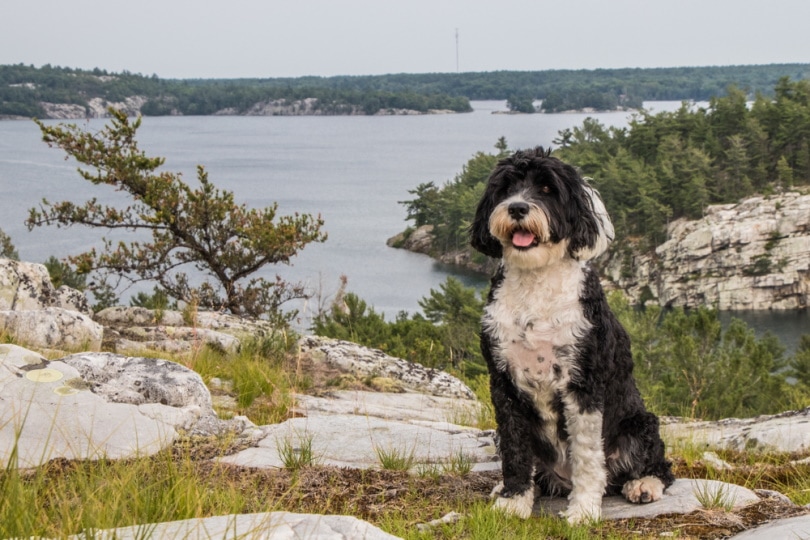
Training Capabilities
The Portuguese Water Dog is very motivated to learn from you, and it shouldn’t take long for you to train them to respond to commands. They have a sporting heritage, and they need mental and physical enrichment.
Health
The Portuguese Water Dog was designed to be a very durable pet. They have a few health issues, but some crop up more than others, including hip dysplasia, inflammatory bowel disease, cancer, and Addison’s disease.
10. Staffordshire Bull Terrier
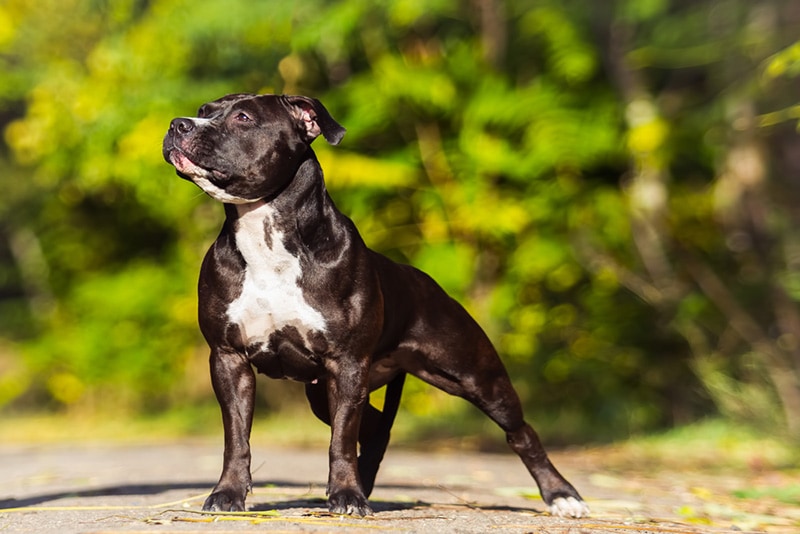
The handsome, muscular Staffordshire Bull Terrier often sports a black and white coat. They can also have other coat colors, but black and white is the most common.
Personality
Staffies are incredibly loyal, affectionate, and doting members of the family. They get along with just about anyone. Although they can get along with strangers, they have quite a high prey drive. Unless your Staffy is raised with cats or other small pets, they might act aggressively toward them.
Exercise Needs
Staffies love running around and playing, but they also enjoy relaxing with their owners on the couch. On average, they require around one hour of daily exercise.
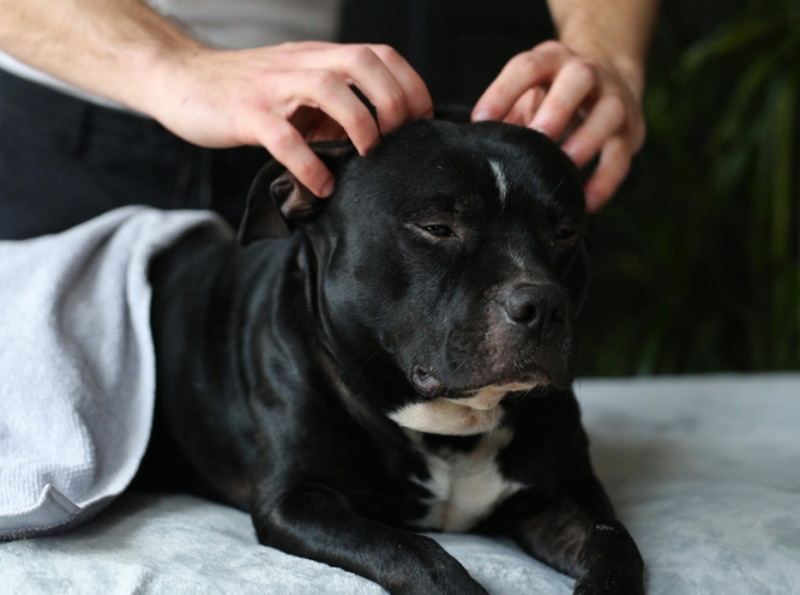
Training Capabilities
Because the Staff is so eager to please, they are straightforward to train. Some take a while to mature, and you might have trouble getting their attention initially. But with the correct training practices, you’ll have a well-behaved dog in no time.
Health
Staffies are usually pretty healthy, but they’re prone to skin allergies. They can also suffer from other conditions like hip dysplasia, epilepsy, and luxating patella.

Final Thoughts
Now you know there’s quite a bit of variety in black-and-white dogs. Some are talented hunters and working dogs, and others are lovable companion animals. Before adopting a black-and-white dog, research the breed thoroughly and visit shelters and rescue centers before you contact a breeder. Most shelters are overflowing with lovable canines that desperately need homes.
See Also:
- 24 Gray Dog Breeds: Pictures, Facts & History
- 8 Dog Breeds That Change Color: Pictures, Facts & History
Featured Image Credit: Lynda McFaul, Shutterstock

